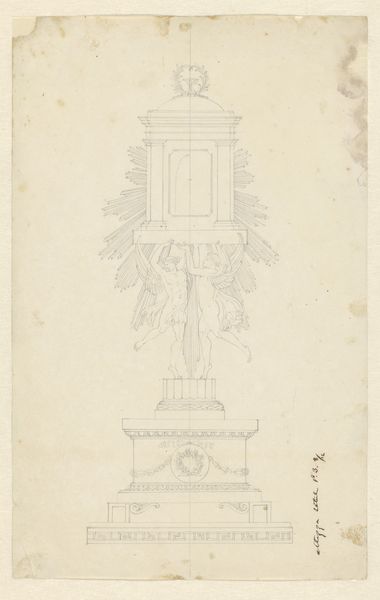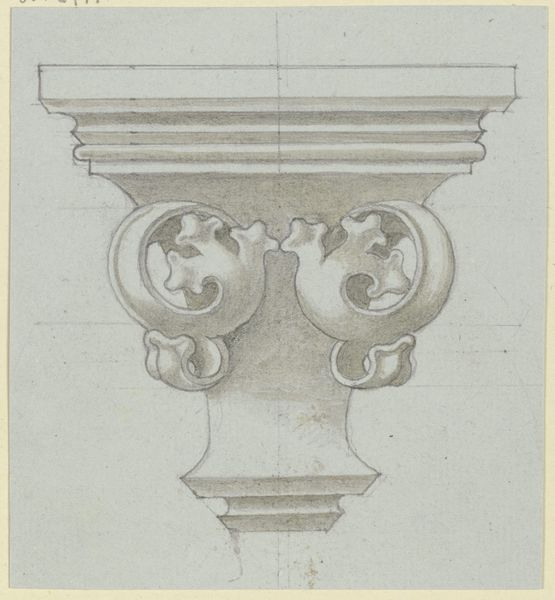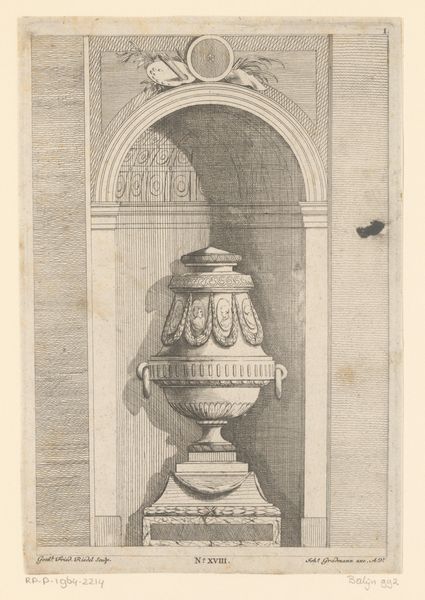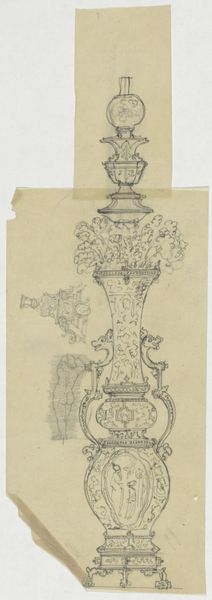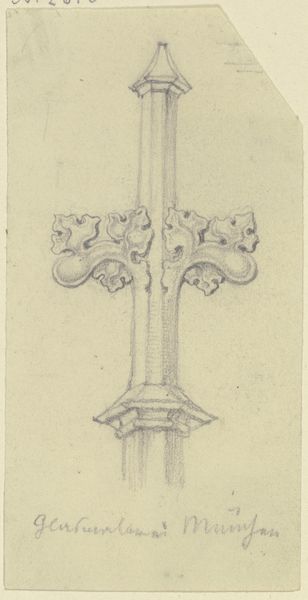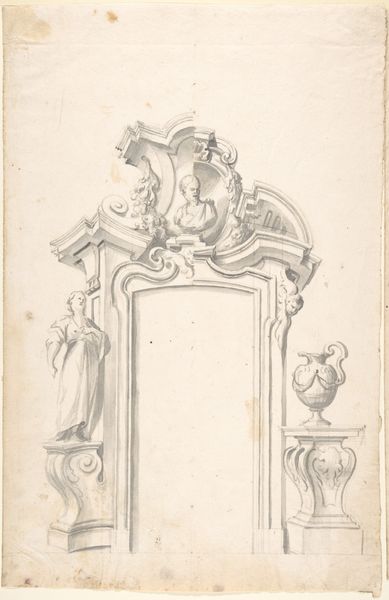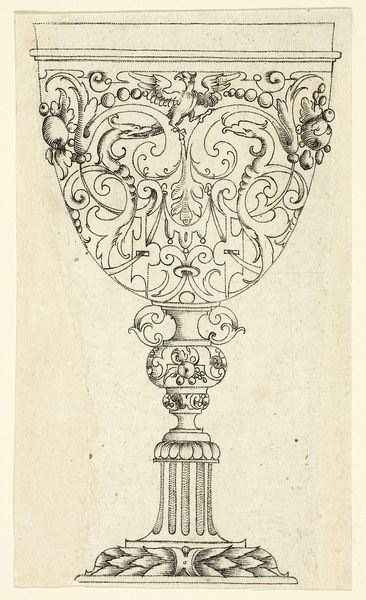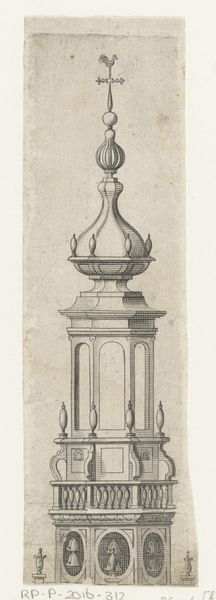
drawing, ornament, paper, pencil, architecture
#
drawing
#
ornament
#
16_19th-century
#
paper
#
form
#
geometric
#
pencil
#
line
#
academic-art
#
architecture
Copyright: Public Domain
Curator: Here we have "Blattkapitell vom Typus der Sainte Chapelle," an architectural drawing held in the Städel Museum. Editor: My immediate impression is one of precision and restraint. The stark lines capture the essence of the leaf capital without ornamentation, making me think of the many sketches and studies that lay the groundwork for material architecture. Curator: Exactly! Notice how the artist used pencil on paper to delineate form. There's a dedication to accurately rendering the structure and the organic details of the leaves. This recalls the academic tradition, focusing on clarity and fidelity in representation. Editor: Indeed. It brings to mind the labor invested in crafting these architectural elements—not only the physical carving in stone, but also the meticulous planning and design represented by such studies. What can we infer about its materiality, given the drawing’s starkness? Curator: It allows for a focus on the fundamental geometric structures and proportions, divorced from the distraction of surface textures or embellishments. Look closely at the structure. Each leaf is rendered as an integral part of the capital's design, contributing to a visual rhythm. Editor: The medium, pencil on paper, also speaks volumes about accessibility. It's an accessible, affordable method of translating ideas into a tangible form, indicative perhaps, of a more democratic dissemination of architectural knowledge in nineteenth-century society. The very act of sketching is tied to production. Curator: Interesting point. There is a clear intersection between organic forms and rigid geometric order. Notice the intentional contrast, reinforcing the principles of classical architecture where nature and order converge to symbolize harmony. Editor: To add, I wonder about the consumption patterns related to architectural designs. What market dynamics existed? Who commissioned and purchased architectural sketches, and to what end? Curator: Fascinating questions. It shifts the conversation toward labor dynamics and the creative act itself, highlighting art-making within its specific social milieu. Editor: This little study reminds me how architecture reflects not only design ideals but also social, economic, and productive forces. Curator: For me, it evokes pure, structured beauty, emphasizing formal elements above all else. It shows a synthesis of intellect and artistic interpretation.
Comments
No comments
Be the first to comment and join the conversation on the ultimate creative platform.

